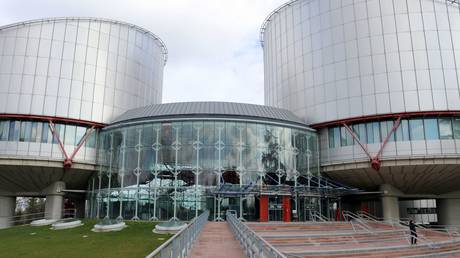As June ushers in the close of the academic year, colleges throughout the country become busy hubs of activity where first year students scramble to study for finals, and seniors put the finishing touches on their research projects that they should submit in partial fulfillment of the requirements for their bachelor’s degree. It was in the midst of this excitement that the Department of Chemical Engineering at Mai Nefhi College of Engineering and Technology (MCET) organized, on the 8th of June, a significant event in Asmara: Chemical Engineering Innovation Exhibit – 2024. Here, research papers conducted largely by the graduating class were chosen and presented to the public as well as stakeholders from the industrial and medical sectors.
The impetus behind the exhibit, as stated by the department, was to establish a platform that brings together the industry and academic research, and encourage a long-term collaboration between the two sectors. The exhibit, which took place outside the college for the first time, was hosted at the National Confederation of Eritrean Workers (NCEW), and was the result of a joint effort of the head of department, professors, lecturers and graduate assistants of the department. The department hosts a variety of fun educational activities, such as the “Chem Fest”, and other recreational events within the college to spark curiosity and maintain interest in students. One of the assistant professors has launched a chemical engineering YouTube channel that is gaining viewership. By all accounts, the Department of Chemical Engineering is a driven, lively department.
Following are the summarized version of the six research papers presented during the exhibit, four chosen from the current academic year, two from last year. It is very much worth noting that the Department of Chemical Engineering has so far published 20 research papers abroad on international science journals like Journal of Agronomy, Technology, and Engineering Management; Journal of Engineering Science; Equilibrium Journal of Chemical Engineering; Research Journal of Pharmaceutical, Biological and Chemical Sciences; Proceedings on Engineering Sciences; International Journal of Food, Agriculture, and Natural Resources, and many more.
It is highly remarkable that the research projects selected for the papers are almost exclusively concerned with tackling local issues in Eritrea, like the problematic proliferation of non-biodegradable plastic waste, clean water wastage, potentials of herbal medicines, utilizing the abundant lime in Eritrea, and energy conservation in cement factories. The researchers in these projects consistently come up with solutions that are sustainable and eco-friendly.
MEDICINAL EXTRACTS FROM PARSLEY LEAVES (Amanda Bereket, Hana Teame, Mussie Okubai, Rahwa Zewelde, Emam M. Basheir)
This study delves into the exciting world of medicinal plant extracts, using parsley leaves as a primary example. The major stages involve pre-treatment of parsley leaves, extraction of active ingredients using solvents, filtration and separation of solid residues, purification of the extracted solution, and drying and packaging of the final product. The compounds obtained are characterized using identification techniques such as mass spectroscopy, infrared spectroscopy, UV spectroscopy and NMR spectroscopy.
By carefully analyzing the extracts, the researchers sought to identify the specific ingredients responsible for the plant’s medicinal properties. These properties can be quite diverse in their healing powers, ranging from antimicrobial (hindering the growth of bacterial infections) to antioxidant (protecting body cells from damage) and potentially antidiabetic (regulating blood sugar). Although the antidiabetic properties hold the most promise, the findings also revealed that the antimicrobial properties of the parsley extracts were comparable to those of the commercially manufactured antibiotic Amoxicillin.
This research aims to establish efficient methods for extracting and analyzing these bioactive compounds, whereby large-scale production could become a reality, paving the way for potential parsley-based, locally manufactured medicines in the future.
BIODEGRADABLE PLASTIC FROM BROWN ALGAE (Rodas Berhane, Sabir A/alem, Samrawit Fanuel, Sinit Solomon, Sofia Haile, K. Eyalarasan)
With plastic pollution a growing global concern, researchers around the world are looking for sustainable solutions. This research project focused on developing bioplastics from brown algae, a promising alternative. Bioplastics made from renewable natural resources like algae offer several advantages over traditional plastics derived from petroleum/fossil fuels, the most notable of which is that they are biodegradable and have minimal impact on the environment. The students investigated the use of sodium alginate, extracted from the Sargassum seaweed species, to create bioplastics. By incorporating a plasticizer (maleic anhydride) and starch, the researchers were able to improve the film’s properties for packaging applications. The researchers produced functional, intact plastics with varying density, and even a bleached variety that is entirely transparent. The initial results show promise, suggesting that bioplastics derived from brown algae have the potential to become a viable solution for much more than just the packaging industry.
ELIMINATING WATER WASTAGE IN ASMARA BREWERY (A. Ramesh Babu, Arsiema Tekle, Heaven Daniel, Filmon Berhane, Abiel Mehari, Daniel Tekleweyni, Samuel Ghebregziaher, Samuel Tuquabo,)
Eritrea’s sole large-scale brewery, Asmara Brewery Corporation Share Company (formerly Melotti Brewery), relies heavily on high-quality fresh water for its operations. Public perception links beer quality to fresh water usage, leading to the industry average of modern breweries to rise to 3.7 – 4.7 liters of water per liter of beer produced. This research reveals that Asmara Breweries significantly exceeds these benchmarks.
The study aimed to identify opportunities to reduce freshwater consumption by reusing treated wastewater within the brewing process. Researchers discovered that Asmara Breweries’ water use and wastewater discharge ratios were more than double the acceptable levels set by industry standards. The research found a staggering 90% of water waste within the brewery operations, i.e., 90% of the fresh water used is not reused. Three primary sources were identified as major contributors to water waste: chase water (clean water used to push finished beer into storage tanks), bottle washer (wastewater generated during the cleaning of returnable bottles), and filler (foamy beer overflow from the filling machine). All three of these sources can undergo simple treatment to be reused but they’re currently cycled for single use. Chase water alone contributes to 41% of the total wastewater, highlighting its significant impact on overall water consumption. Bottle cleaning wastewater, responsible for 37%, also presents a substantial opportunity for recovery through simple pretreatment methods like sedimentation, aeration, and pH neutralization.
The research explored two promising wastewater treatment methods: Alum treatment, which achieved a 92.2% water recovery rate from bottle washing wastewater, and MO (Moringa Oleifera) seed coagulation, which demonstrated an 86.6% water recovery rate from mashing tun wastewater and a 97.2% removal rate of influent turbidity. More specifically, MO seed powder demonstrated promising results in removing pollutants like COD (Chemical Oxygen Demand) and BOD5 (Biochemical Oxygen Demand), and turbidity. While these findings showcase the potential for significant water conservation, further investigation is required to address large-scale implementation. Building a dedicated wastewater treatment plant calls for substantial space allocation, and utilizing MO seeds as a natural coagulant necessitates a robust agricultural sector to cultivate the required quantities.
This research makes way for an alternative path for Asmara Brewery to incorporate sustainable practices. Implementing effective wastewater treatment and reuse strategies can significantly reduce reliance on freshwater resources, contributing to a more environmentally responsible future for the brewery.




